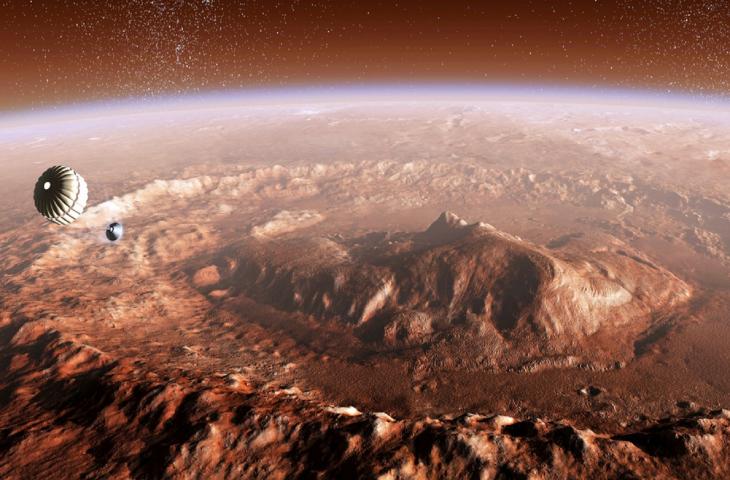MILAN - Up to now, scientists had thought that conditions on Mars, the red planet, were too cold and arid to permit the existence of liquid water. But, according to an article in The Guardian, Nasa's Curiosity rover has discovered liquid water beneath the surface of Mars. Professor Andrew Coates, head of planetary science at University College London's Mullard Space Science Laboratory, said: "It's the first time we've had evidence of liquid water there now."
The discovery
Curiosity landed on Mars in 2012 on the big Gale crater, south of the Mars equator. This enormous crater is 154 km in diameter and its rim is almost 5 kilometres high. The latest results suggest that the surface of Mars is moist because of the presence of a salt that significantly lowers the freezing point of water. Moreover, this salt can also absorb water vapour from the atmosphere, contributing to water "storage". Morten Bo Madsen, former researcher at the University of Copenhagen and co-researcher on the Curiosity rover, said: "The soil is porous, so what we are seeing is that the water seeps down through the soil. Over time, other salts may also dissolve in the soil, and now that they are liquid, they can move and precipitate elsewhere under the surface."
The challenge
The presence of water is traditionally considered an essential ingredient for life as we know it. However, as the scientists point out, there are other factors which still make Mars a hostile environment. The first of these is its magnetic field. The earth's magnetic field protects us from harmful cosmic radiation. However, it is generally agreed that Mars lost its magnetic field 4 billion years ago.











